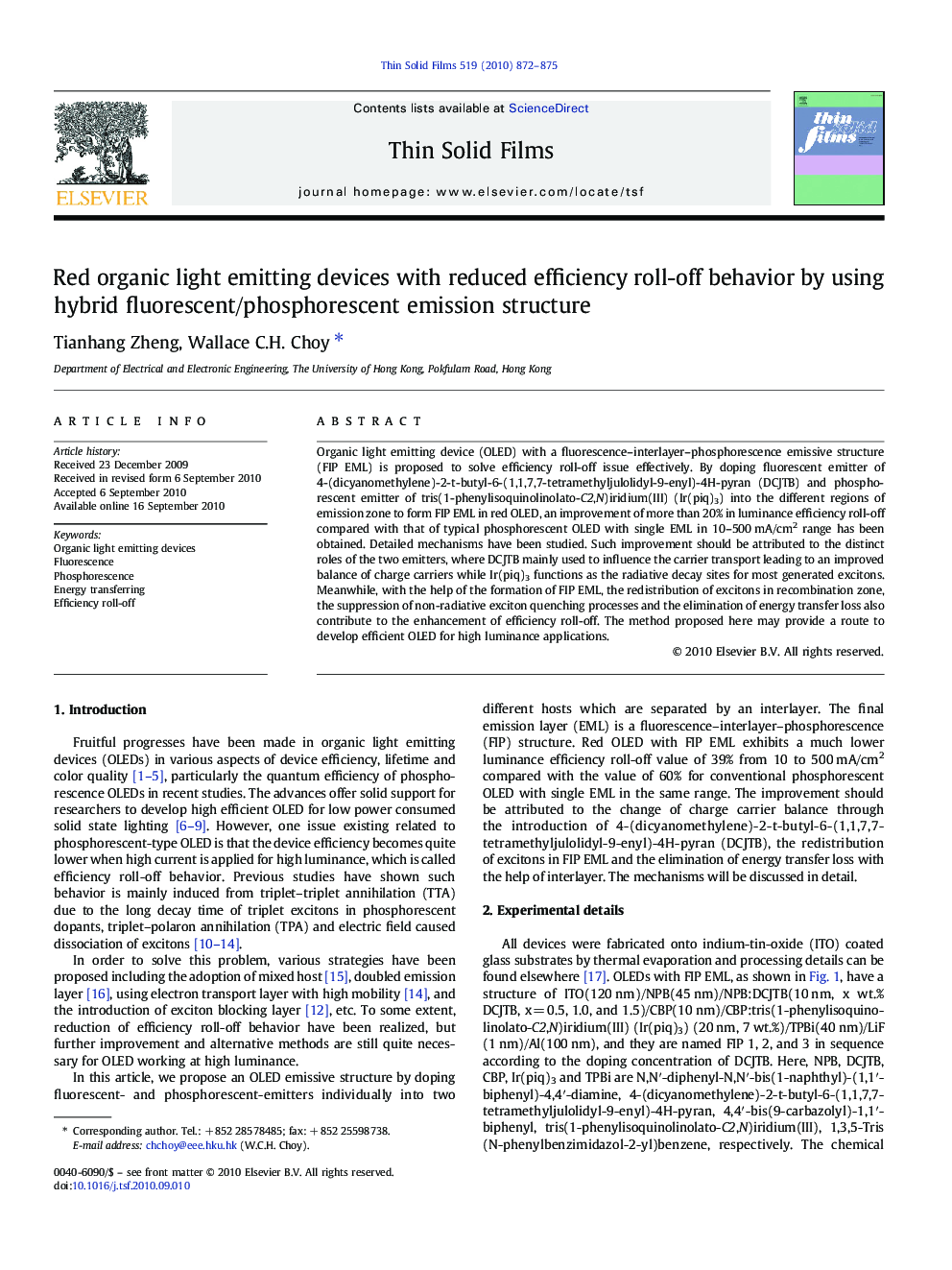| Article ID | Journal | Published Year | Pages | File Type |
|---|---|---|---|---|
| 1668746 | Thin Solid Films | 2010 | 4 Pages |
Organic light emitting device (OLED) with a fluorescence–interlayer–phosphorescence emissive structure (FIP EML) is proposed to solve efficiency roll-off issue effectively. By doping fluorescent emitter of 4-(dicyanomethylene)-2-t-butyl-6-(1,1,7,7-tetramethyljulolidyl-9-enyl)-4H-pyran (DCJTB) and phosphorescent emitter of tris(1-phenylisoquinolinolato-C2,N)iridium(III) (Ir(piq)3) into the different regions of emission zone to form FIP EML in red OLED, an improvement of more than 20% in luminance efficiency roll-off compared with that of typical phosphorescent OLED with single EML in 10–500 mA/cm2 range has been obtained. Detailed mechanisms have been studied. Such improvement should be attributed to the distinct roles of the two emitters, where DCJTB mainly used to influence the carrier transport leading to an improved balance of charge carriers while Ir(piq)3 functions as the radiative decay sites for most generated excitons. Meanwhile, with the help of the formation of FIP EML, the redistribution of excitons in recombination zone, the suppression of non-radiative exciton quenching processes and the elimination of energy transfer loss also contribute to the enhancement of efficiency roll-off. The method proposed here may provide a route to develop efficient OLED for high luminance applications.
